Peter MALONE
Saturday, 18 September 2021 19:54
Eisenstein in Guanajuato
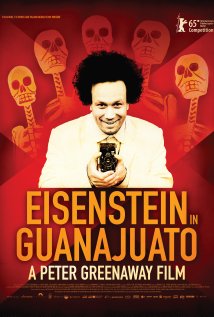
EISENSTEIN IN GUANAJUATO
Netherlands, 2015, 105 minutes, Colour.
Elmer Baeck, Luis Alberti.
Directed by Peter Greenaway.
Peter Greenaway’s films are an acquired taste. With expertise in Fine Arts, and after many short films, he began making features in the 1980s, beginning with an exercise in design and architecture, The Draughtsman’s Contract. He continued his artistic vein, but with narrative, during that decade.
However, his films of the 1990s were less accessible to the general audience, more esoteric in theme, and more packed with visual design, even crowded pictures around the framework of the image. This was the era of Prospero’s Books, The Baby of Macon, The Pillow Book. He then retired to make more experimental films although he did do a study of Rembrandt and now this rather more straightforward film on Russian director, Sergei Eisenstein.
Eisenstein had become celebrated in Russia, especially with his films October and The Battleship Potemkin. He received invitations from Hollywood to visit and did so, making friends with Charlie Chaplin, and there are a allusions to this visit in this film. However, he moved on to Mexico with the intention of making a film, a documentary. He did film an enormous amount of footage for Que Viva Mexico.
While this film does focus on his ability as director, this is a more personal portrait of a Russian absorbing some of the culture of Central America. He comes across as a rather boisterous personality, partly uninhibited in manner, but inhibited in his own sexual orientation which is put to the test, especially through his Mexican guide, an ethnological professor, married with a family, who seduces Eisenstein. Eisenstein is shocked by the experience but also begins to feel liberated. It can be noted that the seduction sequence is fairly explicit.
Greenaway does not use a lot of his expected techniques. This is a much more restrained film, using the split screen to great advantage, sometimes putting actual photos of celebrities on the margins of the screen to highlight the realistic background of this narrative.
Eisenstein is played by a finish actor, Elmer Baeck, who gives a performance that is a blend of the uninhibited extrovert and the quieter introvert who is on a voyage of discovery, of himself, of his film career, of a different country and culture from what he was used to.
There are some verbal interventions by Stalin and Eisenstein had to return to the Soviet Union and to the furthering of his career, although, by his visit, he seems to have lost some of the esteem that he experienced in Russia.
Whether the film is accurate or not, it is so well made, capturing audience interest, that we feel that we have got to know Sergei Eisenstein.
1. A Peter Greenaway film: his career, style, aesthetics, his subjects, themes?
2. Audience knowledge of Eisenstein, his films, Russian, his career, before Mexico? His films about the Russian Revolution? Going to Mexico, the possibilities for a film?
3. Eisenstein as a person, aged 33, his films, hopes, his visit to Hollywood, being defeated? The visit to Mexico, possibility for a film? His personality, sexual orientation and the significance of the Mexico visit?
4. The period, the early 1930s, Mexico, the visuals, the towns, outside the towns? The musical score? The three men, on guard, dressed as if for a spaghetti western?
5. Greenaway and his adopting a narrative, a timeline? A more direct presentation of his theme? But his visuals: the split screens, the dramatic effect, the photos of actual celebrities, their insertion at the edges of the screen? The drawings and pornography?
6. The character of Eisenstein, his films, the excerpts, his reputation in Russia, outside Russia? No scandals? The Moscow visit of Nicholas Schenk, the Hollywood contract? In Hollywood, walking with Chaplin, Douglas Fairbanks? His development of his film technique, montage?
7. The Mexican city, the buildings, the colour of the buildings in the vistas, the church, the belltower, the hotel, the lavish room, the shower, the phone, the luggage, packing, his walks around the city, the underpass and the sleazy aspects? Going to the accidental catastrophe, holding the child?
8. His photos, the maid, taking them, the manager, the issue of pornography, the police? The significance of the press – and the reporting of his holding the child at the disaster, and the various interpretations? The camera, the look, the stereotyped Mexican locations?
9. Eisenstein and his temperament? His white suit, given by Chaplin? His shoes and no socks, allowing them to be cleaned by a boot-man, comparisons with life in Moscow? His phone calls to Pera? Life in Mexico and Moscow, running water, wearing underwear…?
10. The emotions, his arrival, the issue of the flies in the close-ups? Flamboyant style, the car, his room, the maids and the staff, on the bed, his eccentricities, walking around naked, unable to start the shower?
11. Palomino, as guide, presentable? His background in ethnography, to comparative religion, losing his faith? His wife, children, the meal and the talk?
12. Eisenstein going around the town, the detail, his becoming sick, vomiting, Palomino fixing him, calming him down, the discussions?
13. Eisenstein and his sense of his body, ugly? Stripping, on the bed, the shower, the talk, on the phone in the shower? Palomino and his talking, stripping, facing him, the arousal, on the bed, the penetration, the blood, the effect, masturbating him? This transition in Eisenstein’s life, his talk about his sexuality and Moscow, restrained? Palomino and his response? Eisenstein falling in love, not wanting to be?
14. Upton Sinclair and his wife, producing the film, Hunter and the photos? The contract? The hopes of the film, capturing Mexico? Scenes of the shooting of the film, the enormous amount of footage, the budget, his extravagance? Mary and her arrival, dominant, upbraiding him? His wearing only a shirt? Her reaction? her attack on Palomino? Her ultimatum? Upton Sinclair in hospital?
15. The issue of the Visa, the limit, his passport close-ups? Mrs Palomino and her talking with him, persuading him to leave? The phone call to Pera, lying on the floor? In the car, leaving at funeral pace, on the Day of the Dead? On the roof with Palomino, throwing down his shoes?
16. The hotel staff, taking the photos, her parents, the manager, promotion, life at the hotel?
17. Symbolic character of the bellringer, blind and deaf, the ringing of the bell, having his meals, the symbol? Eisenstein going in, sitting with him under the bell?
18. The final information, the footage, the Russian films, his career in Russia during the 30s and 40s, anti-homosexual laws in 1936, his death in 1948, his banging on the pipes, his not being heard?
19. An interesting portrait of a film genius? An eccentric personality?
Published in Movie Reviews
Published in
Movie Reviews
Tagged under
Saturday, 18 September 2021 19:54
Murder by Invitation
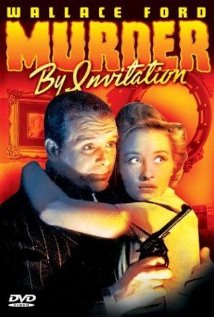
MURDER BY INVITATION
US, 1941, 69 minutes, Black and white.
Wallace Ford, Marian Marsh, Sarah Padden, Dave O' Brien.
Directed by Phil Rosen.
Old dark houses were still popular in B features in the early 1940s. This one is an amusing variation. It is also quite comic. And it has the popular, kind of Front Page Story element with Wallace Ford portraying a popular column writer, travelling along with his feisty assistant, Marian Marsh, and his photographer.
At the opening of the film, elderly aunt Cassie, played by British-born Sarah Padden, is a victim of her relatives who want her put into an institution because she cannot manage her money. And she has a lot of it. The court sequences are amusing as she continually one-ups her prosecuting nephew, full of common sense and practicality. Then she calls them all to come to her mansion at midnight for them to stay a week so that she can scrutinise them and know whom she should live leave her money to.
Needless to say, they are not very happy, do assemble, with the staff, including a cook, butler, gardener and mechanic, and an odd next door neighbour who is continually prying. Almost immediately, the prosecutor is murdered, followed by another of the relatives. The others are nervous, as are the newspaper crew who have been called in, the columnist having a reputation for solving mysteries – and, surprisingly, the sheriff continually seeking his advice and opinion.
Since everyone is assembled at the time of the murders, there is a mystery – enhanced by the fact that there are all kinds of moving doors and secret passages. Aunt Cassie is suspected but she is enjoying things more or less and decides to burn the house down, giving the box of money to the cameraman for its safe protection and looking to see who will be the first to rush into the house to save the money. It is her companion, seemingly devoted, who has married the mechanic – who is the actual murderer. For film buffs who enjoyed MGM’s Pete Smith Specialties, it is rather a surprise to find that the mechanic is played by Dave O’ Brien, the victim of all the pratfalls in those short features.
Nothing particularly startling, but an entertaining film of its kind, the blend of the mystery, the touches of comedy, and the performance of Aunt Cassie.
Published in Movie Reviews
Published in
Movie Reviews
Tagged under
Saturday, 18 September 2021 19:54
House of Mystery
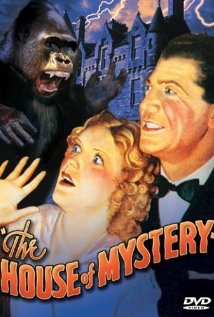
HOUSE OF MYSTERY
US, 1934, 69 minutes, Black and white.
Ed Lowry, Verna Hillie, John Sheehan, Joyzelle Joyner, George 'Gabby Hayes'.
Directed by William Nigh.
This is another of those early 1930s brief supporting features with touches of comedy and touches of horror and scare. Old dark houses were very popular at this stage and, ultimately, this is a variation.
It opens in Asia, rather generically, where an American adventurer, with very racist and superior attitudes, is in love with a dancer at ritual ceremonies, is searching for prized statues, is confronted by a Hindu priest and violently responds, escaping with the help of the woman.
After 20 years, some people who financed the original expedition, especially a very, very absent-minded professor and his rather humorously dominant wife, go to an agent who calls the American investors together – at 8.30 p.m. at the home of the adventurer who has been discovered and is now in a wheelchair, still with his assistant Hindu woman and a gorilla, (as well as a stuffed gorilla who are interchanged throughout the film for some of the killings).
Some of the investors are in need of money, pressured by bookmakers, and one of them disguises himself as a gorilla and chokes a hypochondriac woman whose companion is a medium who relies on Pocahontas! There is also an intrusive young man who is an insurance salesman and takes every opportunity to promote his case.
There are various horror shenanigans, mysterious deaths, revelation that the adventurer had organised everything, murdering investors in England, and planning to kill those in the US. There are complications with the insurance man being attracted to the adventurer’s full-time nurse, the Hindu woman waiting decades to get her revenge (which she does, the adventurer revealing that he is not crippled, and her locking the door, incense pervading the room and tom-toms which of the queue for the real gorilla to attack), moving the real gorilla into a room and bringing out the fake one when it suits her. There are also police, not always as competent as they might be – and a strange electrician who, it is revealed, is really a Scotland Yard inspector!
The opening of the film was a reminder of brash and brutal colonial superiority. The rest of the film is very American, mysterious killer, disappearing victims…
Published in Movie Reviews
Published in
Movie Reviews
Tagged under
Saturday, 18 September 2021 19:54
Ghost Walks, The
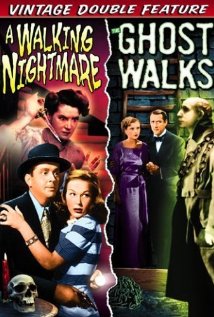
THE GHOST WALKS
US, 1934, 69 minutes, Black and white.
John Miljan, June Collyer, Richard Carle, Johnny Arthur.
Directed by Frank R. Strayer.
This is another of those early 1930s brief supporting features with touches of comedy and touches of horror and scare. The film was directed by Frank R. Strayer, quite prolific during the 1930s with thrillers like this, but at the end of his career in the mid-to-late-1940s, he moved to evangelical religious themes and made for films, including The Pilgrimage Play.
Old dark houses were very popular at this stage and this is a variation. A group of travellers arrive at an isolated mansion, storms preventing anyone leaving. A playwright has brought a producer and his assistant to the mansion to have a reading of his play. When they arrive, a number of sinister things happen, personal clashes between the people of the mansion, and a woman whose husband has been killed acting in a very strange manner. The producer and his rather campy assistant certainly want to get out of the house but are trapped.
Then the playwright explains that what they have experienced is actually the first act of the play. When the demented lady seems to have been killed, the guests resumed their ordinary characters and try to deal with the menacing situation whereas the producer and his assistant go up to bed thinking that all the rest of the behaviour is the second act of the play.
A policeman arrives saying that there has been an escape from the local institution and they begin their search. There is the playwright, the actor who in the original act was very jealous, the leading lady, the doctor who owns the house.
When more police arrived from the institution, it soon emerges that the original visitor is the madman and he is, fortunately, discovered in the basement, where he has set up a surgery for experiments, taking particular parts from each of his captives to form a perfect face… Then the seemingly dead woman wakes up, having been drugged. The real guards arrive just in time – but they have a technique for getting the mad doctor who thinks he is a genius to go back to the institution, telling him that his work on Julius Caesar’s transplant nose has been mistaken, it is upside down and Caesar is finding it difficult to breathe. With that, the would-be doctor is happy to go back to fix up Caesar’s nose.
It has some tensions, but also quite some silliness – but it is the nature of the genre at that time.
Published in Movie Reviews
Published in
Movie Reviews
Tagged under
Saturday, 18 September 2021 19:54
Right Kind of Wrong, The
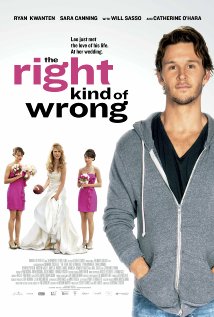
THE RIGHT KIND OF WRONG
Canada, 2013, 97 minutes, Colour.
Ryan Kwanten, Sara Canning, Will Sasso, Catherine O’ Hara
Directed by Jeremiah S.Chechik.
This is a Canadian romantic comedy, with a questionable hero. He is played with some charm by Australian Ryan Kwanten, or known best for television’s True Blood. He is an author who clashes with his publisher about editing, falls out with his wife, and she leaves him, setting up a blog which is immensely popular. He is the target of all her criticisms.
Meanwhile, he works as a dishwasher, glimpses a woman getting married and becomes infatuated, intruding into the wedding, beginning to stalk her, turning up at all times. The husband is wealthy, rather smug, and she wonders why she married him, eventually succumbing to the author’s attentions.
There is something cheery in the performances but some audiences wondered about the central character’s efforts to break up the marriage for his own love and satisfaction.
1. A variation on romantic comedies?
2. Canadian production, atmosphere, locations, the town, homes, the weddings, the countryside, the score?
3. The title, as applied to Leo and his behaviour?
4. The introduction to Leo, author, clashing with his publisher about the editing, yet his friendship? His wife, the clashes, her being upset, leaving, setting up the blog, the criticisms of her husband, the popularity of the blog, people identifying Leo through the blog? Her writing the book, publishing it?
5. Leo’s life, writing, dishwashing in the restaurant kitchen, the Indian friend and their conversations?
6. The wedding, Leo watching, the glimpse of Collette, falling in love, infatuation, going to the wedding, is intruding, as a guest, stalking, the meetings with her, with her husband?
7. Collette, the decision to marry, her mother’s adverse comments, her husband, his friend, the lifestyle, smug? The marriage, love, Collette wanting to preserve the marriage?
8. Leo, continually turning up, pratfalls and accidents, the husband and fights, the court?
9. Leo’s wife, her return, the change, his own self-image? The interactions with the publisher?
10. Collette’s husband, the differences, lifestyle and expectations, the leaving, the connections with the Leo? Her decision and the consequences, for Leo
and herself?
Published in Movie Reviews
Published in
Movie Reviews
Tagged under
Saturday, 18 September 2021 19:54
Sworn Virgin

SWORN VIRGIN
Albania/Italy, 2015, 90 minutes, Colour.
Directed by Laura Bispuri.
It is not usual to see a film from Albania. This one opens in the mountains of that country but spends a great deal of its action time in Italy.
The sworn virgin of the title is the second daughter of a strong mountain man who seems to have wanted a son. There are flashbacks to the life of the two little girls together but, it soon emerges, that one of them has migrated to Italy. The younger daughter, Hanah, makes a decision that she would live as a man, Mark, with her father presiding over a ritual ceremony, cutting her plaits, and declaring that she is his son. When he dies, accompanied by a vivid ritual with the fellow men of the village, she decides to migrate to Italy, arriving at her sister’s house, partly welcomed, not liked by her niece, but eventually accepted. She explains that she is Mark and conducts herself as a man. Her brother-in-law finds her an apartment, she makes friends with her niece who is involved in synchronised swimming, and reconciles with her sister. She is also attracted by the man who looks after the pool. At the end of the process, she decides that she would like to live as a woman, returning to the identity of Hanah.
This theme would be interesting in a film from many cultures, but is especially of interest is being treated by Albanian filmmakers.
1. Albanian film, issues, characters? The contrast with life in Italy?
2. The Albanian mountain locations, rugged, at work, details of life, the village, families? The visit to the sea? The musical score?
3. Italy, the city, apartments, workplaces, clubs, the swimming pool?
4. The title, the focus on Hanah, her becoming Mark? Her father?
5. The structure: Hanah and her leaving, down from the mountains, the boat, the Italian city, the sister’s apartment? The insertion of the flashbacks? The two little girls, their mother, the father, the experiences and their sharing?
6. The father, his wanting a son, Hanah becoming the son, the ceremony, her being declared his son, the ritual, the cutting of the hair, her work? The relationship with her mother? The father’s death, the men’s ritual at his death? Leaving, her mother’s letter, later reading it with her sister?
7. Gender issues, her virginity, sexuality, the repression of the feminine, the binding of her breasts, as Mark, travelling, meeting Lila, the family and their acceptance of her, her life in the city, the work, the husband giving her apartment?
8. Lila, the tense relationship, the years of absence? The family, the daughter and her moodiness at first? The room? The new apartment, exhilaration?
Her back and the sores? Helping the daughter, the swimming, the bond?
9. The pool, the attraction of the guard, the sexual encounter, the future? Her becoming a woman again?
10. The letter, the bonding of the two sisters, their memories, building a future?
Published in Movie Reviews
Published in
Movie Reviews
Tagged under
Saturday, 18 September 2021 19:54
Parachute Jumper
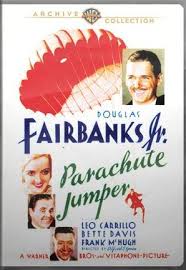
PARACHUTE JUMPER
US, 1933, 70 minutes, Black and white.
Douglas Fairbanks Jr, Bette Davis, Frank Mc Hugh, Leo Carillo.
Directed by Alfred E. Green.
So this is what films were like in 1933. There is more than enough plot for 70 minutes, Marines in Nicaragua, stunt pilots and air shows, the depression and difficulties in finding accommodation in New York City, gangsters and their wives, shootouts, smuggling drugs by plane and machine gun fire at police from one plane to another…
It is an opportunity to see Douglas Fairbanks Jr in his young days, Frank Mc Hugh, always the buddy, and Bette Davis in an early role as a secretary.
Direction by Alfred E.Green, a veteran of many films including the Al Jolson biographies.
1. 1930s films, their style, American, pace, characters, packed with plot?
2. The Marines, Nicaragua, pilots? Skilled stunt work? The depression, jobs hard to find? Poor apartments? Buddies, romance, the elements of the gangster film, the gangster, his wife, jobs? The jump and the air show? trafficking in drugs, the flights, the guns, the attack on the police plan, crashes, dangers?
3. Black-and-white photography, locations, New York City, studio work, flight sequences, the cast?
4. The buddies, the characters, life in the Marines, Nicaragua, Bill and his stunt, Patricia/Alabama and her fears? their personalities, the apartment, the scams, Alabama and her reaction? Toodles and his singing?
5. Alabama, sitting on the bench, talking to Bill, accepting the invitation, her caution about and harassment? Taking the job, secretary of the gangster, Bill and his reaction, the advances, combining with Bill and giving information, the happy ending?
6. The gangster, his type, the times, his wife, smuggling, the drugs, his partners, gangsters and setups for shootings? The police, the guns, the missions?
7. The men wanting their independence, their plan, planes? The sky and aerial acrobatics, their freedom?
8. Popular entertainment of the early 1930s?
Published in Movie Reviews
Published in
Movie Reviews
Tagged under
Saturday, 18 September 2021 19:54
Under Electric Clouds
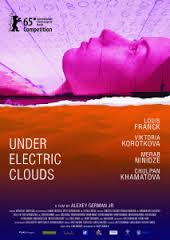
UNDER ELECTRIC CLOUDS
Russia, 2015, 130 minutes, Colour.
Directed by Alexey German Jr.
This is a film designed for Russian audience or audiences who are aware of Russian history, politics, economics, industry as well as the traditions. It has social implications, ethnographic situations and implications, personal stories.
The film also has a singular visual style, is divided into seven chapters with headings, and indications of interconnections between the stories. The setting is 2017, the film released in 2015 at the time of the presidency of Vladimir Putin and the Russian experience, unrest and war, especially in Ukraine, in the context of international sanctions.
The camera work is distinctive, many tracking shots, close-ups, Russian editing and pace. There is also voice-over, explaining the background of the building, the links with particular characters, the building and its being unfinished servings a symbol. There are sequences in chapters with architects, vying about the design, wondering the parking lot, others asking questions about a cupola or a spire. A range of different perspectives.
The film opens with a foreign wanderer, in the cold, difficulties of language, looking for work, and issues of life and death. It is followed by a chapter about the heirs when the owner of the building dies, the son preferring to be with his friends, the daughter wanting to honour her father, getting ideas, inspecting – and the chapter ending with her standing on her hands, upside down on the top of the building.
There is also a story about a real estate agent and his memories, difficult times in 2011, problems.
Whether there is a resolution is a question, visionary, philosophical or whether the whole film has been an exploration, some abstract considerations. To that extent, this is a cleverly made and artistic film for Russians and those familiar with the Russian experience, difficult or even alienating for non-Russians.
Published in Movie Reviews
Published in
Movie Reviews
Tagged under
Saturday, 18 September 2021 19:54
Cinderella/ 2015
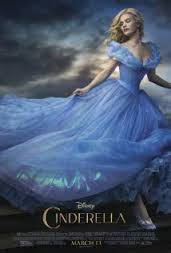
CINDERELLA
UK, 2015, 105 minutes, Colour.
Cate Blanchett, Lily James, Richard Madden, Helena Bonham Carter, Stellan Skarsgaard, Derek Jacobi, Ben Chaplin, Hayley Atwell, Rob Bryden.
Directed by Kenneth Branagh.
This version of Cinderella is one of great charm, a pleasure to watch, entertaining and often funny, with some witty and wry lines – a film for girls of every age, young girls and old girls, but not one for boys of any age!
The screenplay was written by Chris Weitz, writer and director of several very entertaining films, including About a Boy, and directed by that fine actor, Kenneth Branagh. And the cast is top-class, Lily James a lovely as Cinderella, Richard Madden making an impression as the Prince. But it is some of the adults who are entertaining, principally Cate Blanchett as a smilingly cruel stepmother (often wearing green, indicating her envy and jealousy), uttering quite ironic and cutting lines. She spends a lot of time promoting her daughters simply because they are her daughters, whom she thinks are rather stupid (and not incorrectly). Derek Jacobi is the King, Stellan Skarsgaard is the scheming Grand Duke, Ben Chaplin Cinderella’s sympathetic father, with a brief comic turn from Rob Bryden as the artist commissioned to paint the Prince.
The thing is, of course, that we all know what is going to happen. The pleasure is in anticipation and then the satisfaction of seeing how what we were expecting turns out.
There is something of a more serious opening to the film, Cinderella as a young baby, the loving parents, her mother’s death, the father and his travels, and the charming Cinderella making no objections at all to her father’s wanting to marry again. It is clear that she has not yet met her prospective stepmother!
All goes according to the stepmother’s plan when she moves in, installing the daughters, relegating Cinderella to the attic, not allowing her to eat with the family, Cinderella not allowed to do anything much in fact. But, Cinderella has great comfort in her four pet mice, the most engaging little animals on screen since that chorus in Babe 20 years ago. Their comic presence and some of their antics are very entertaining – especially in comparison with the stepmother’s big ugly cat.
Cinderella is certainly an energetic young woman who does ride off in frustration into the forest, encountering the Prince going hunting, pleads for the life of the stag that the hunters are chasing, and thinks the Prince is an apprentice. In the meantime, the Prince has fallen in love, telling his dying father and irritating the Grand Duke who wants the Prince to marry into foreign royalty. So, the ball is proclaimed, stepmother and daughters get their dresses ready, Cinderella being reduced to having to put on her mother’s stress and having stepmother berate her, mock her and tear the dress.
It is time for the fairy godmother to arrive – although it is she who has been doing the amusing voiceover. She appears as an old beggar at the mansion door to whom Cinderella is kind and, lo and behold, a transformed begowned blonde beauty, Helena Bonham Carter. She is very funny as she goes choosing the pumpkin, transforming the lizards into footman, the goose into the coach driver, and the four mice into the horses.
The ball is as lavish as might be expected as is Cinderella’s blue gown, her skill in dancing, talking with the Prince – but it is soon midnight and the spell is lost (except, of course, for the glass slippers which do not disappear).
Some comedy as everybody tries to get the slippers to fit, the cruel stepmother preventing Cinderella from trying – but, and it’s thanks to the mice and their thoughtfulness, that she gets her opportunity and, then, happy ever after. And the final credits conclude with the song from Disney’s 1950 film, Bibbity, Bobbity Boo. What more could one ask for?
1. A pleasing and popular version of the fairytale? Well-known? Happy tale? Live action? For the 21st century?
2. The archetypal elements: the parents and their deaths, the happy childhood, the message of courage and kindness, destiny, suffering, love, transcendence? And the picture of old-fashioned royalty pomp?
3. Kenneth Branagh as director? A lavish production, serious touches, light and comic touches? Strong romance? And the comeuppance of the cruel stepmother?
4. The voice-over, the fairy godmother? Her perspective on characters and situations? Appearing is a begger, the glass of milk, turning into the beautiful Helena Bonham Carter? The promise, searching for the coach, the pumpkin, the lizards as footmen, the mice as the horses, the goose as the driver, the beautiful dress, the glass slippers? The midnight warning? But the slippers not disappearing? The magic of a fairytale?
5. Ella as a baby, happy, living with her parents, growing up with them, with the animals, communicating, the mice and comedy, her mother and her illness, the death, the bequest of courage and kindness? Love for her father, his travels, the gifts? Ella gracious about her father wanting to marry again?
6. The stepmother, imperious, the daughters, ugly, ditzy, stupid, quarrelsome? The bad singing, the teasing of Ella, the name of Cinderella? And the significance of the cat?
7. The character of the stepmother, her later story about her life, losses of husbands? The prospect of poverty, never wanting it again, promoting her daughters while despising them? Her ambitions? Behaving with cruelty, cutting remarks?
8. Ella consigned to the attic, the menial work, the meals by herself, the cold, the cinders on her face? Her continuing to be courageous and kind?
9. Riding into the forest, the stag, wanting it free? The encounter with the Prince, their talk, love, she thinking he was an apprentice?
10. The Prince, his devotion to his father, the visit of the doctor, imminent death, his dutifully obeying orders? The role of the Grand Duke, political, scheming for the marriage, international? The Captain and his friendship with the Prince? The Prince sitting for the painting and the comedy with the painter, his fall in the angles?
11. The announcing of the ball, Princesses to come, commoners to come, the proclamation in the marketplace?
12. The stepmother, her plans, the three dresses, nothing for Ella? Getting ready on the night? Ella and wearing her mother’s address, stepmother and her being callous, terror and address and mocking it?
13. Ella, sad, the fairy godmother, as a begger, her change, the trans formation, looking at the vegetables, the pumpkin, the visits asphalt men, things as driver, the mice as horses? Going to the ball, the long staircase, entry, everybody looking? Kit and his father? The introduction of all the princesses, the plan for his marriage?
14. Kit inviting Ella to dance, the applause, Ella and her brief encounter with the King? The couple going out into the garden, midnight, her rush, losing the slipper?
15. The comedy of the disintegration of the coach, the transformation back to visits, goose, mice, flicking the drawbridge gate?
16. The final talk between father and son, the father allowing his son freedom of choice, praising him for being his own man?
17. The proclamation about the slipper?
18. The stepmother, overhearing the grand Duke, threatening, the plan, her ambitions, to be a Countess?
19. The stepmother confronting Ella, having the slipper, breaking it?
20. The test for the women, the long lines, the sisters and forcing on the shoe?
21. The mice opening the window, Ella singing, the Grand Duke hearing and not hearing, The Captain and his persuading the fitting? The King, meeting Ella, the slipper, accepting each other as they are?
22. The fairytale, the characters coming to life? The comedy throughout with the four mice, the cat, the visits, the goose?
23. The wedding and happy ever after? the final songs – and memories of Bibbity Bobbity Boo?
Published in Movie Reviews
Published in
Movie Reviews
Tagged under
Saturday, 18 September 2021 19:54
Umphefumlo/ Breathe

BREATHE/UMPHEFUMLO
South Africa, 2015, 90 minutes, Colour.
Busiswe Ngejane, Mhelekazi Mosiea, Pauline Malefane, Zebulon Mmusi.
Directed by Mark Dornford- May.
In 2005, the team behind the making of this film, won the Golden Bear at the Berlin Film Festival for their interpretation of Bizet’s, Carmen, U-Carmen?. The next film was a gospel story, a focus on Jesus, Son of Man, which also incorporated a great deal of song, especially for the star performer, Pauline Malefane, portraying Mary, mother of Jesus.
This time they have done an interpretation of Puccini’s La Boheme, setting it in the township outside Cape Town, where Carmen was set, Khayelitsha. The setting is also contemporary, using a group of university students for the central characters. This works quite well, incorporating the arias and other music from Puccini but also having a chorus, at times, of the main musical theme sung in choral fashion.
The story makes sense in the contemporary setting, poor students, winter, cuts in electricity, the cold – with the information that the area is one of the worst for tuberculosis in the world, certainly a place for Mimi to be ill. She falls in love with her fellow student, as he does with her, very briefly presented during song. There are moments of happiness, Mimi leaving because of her illness, returning with her friend Zoleka (Pauline Malefane) only to die.
The film is vividly made, with an emotional pull, and a celebration of Puccini’s music.
1. A contemporary of interpretation of an opera coming from South? From a choral ensemble? Local black artists? Operatic music? Local music?
2. The work of the director and the ensemble, the prize-winning film, U- Carmen, the gospel drama, Son of Man?
3. The setting, Khayelitsha, the township, the information about tuberculosis, the prevalence in the township? The setting for Mimi and her illness?
4. The popularity of Puccini’s La Boheme? An adaptation, contemporary, local, on the outskirts of Cape Town, the huts, the University, the shops, festivals, concerts? Apartments, the car wash, the railway and the overpass?
5. The cast, skills in acting, singing?
6. The introduction to the cast, and names, the details of their studies, the image of their achievement, art, drama, philosophy, botany?
7. The situation, the winter, the winter scenes, the electricity cuts, the dark – a contemporary equivalent for the darkness and cold of the original opera?
8. The men, friends, smoking the joint, the authorities arriving, the chase?
9. Lungelo and his seeing Mimi, her botany work, the talk, in the dark, tenderness, falling in love, communicating? Lungelo and his hiding? The introduction of Puccini’s music, the singing, the choral background of the familiar theme? The credibility of the falling in love within the space of time?
10. The boys, Mimi going with them, rowdy, the upset, having to report to the University Dean, their being let go? Angers? Especially have the young man who was selling tickets for the Youth Day Festival and pocketed the money?
11. Zokela, a celebrity, the concert, Youth Day? Her bond with the young man, the clashing?
12. Mimi and Lungelo, their arias, their time together, gathering the lilies, the men trying to sell some on the roadside? Mimi with the doctor, no longer pretending, the medication not working? Her suffering, the coughs and the illness?
13. Mimi deciding to leave, Lungelo distressed, the young men working at the car wash? Her return, Zokela and the clash with her friend? Zokela and her
tenderness? Mimi and the memories, her dying, the singing, the pathos?
14. Lungelo and his grief, the two men giving the jacket to Mimi for the cold?
15. Zokela and her friend, reunited?
16. The key elements of Puccini’s opera, blending with contemporary South Africa, black South Africa?
Published in Movie Reviews
Published in
Movie Reviews
Tagged under